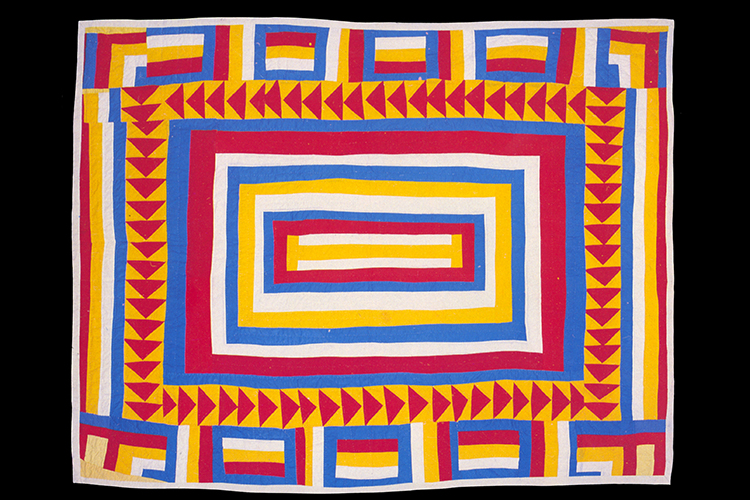Nearly 3,000 quilts by African American artists now at BAMPFA
The collection, believed to the be the largest largest of its kind ever assembled, was gifted to the museum as a bequest by Eli Leon, an Oakland-based art scholar and avid collector of African American quilts
October 17, 2019
A collection of nearly 3,000 quilts by more than 400 African American artists — believed to be the largest collection of its kind ever assembled — was gifted to the Berkeley Art Museum and Pacific Film Archive (BAMPFA) as a bequest by Eli Leon, an Oakland-based art scholar and avid collector of African American quilts.
“We intend to honor this incredible act of generosity just as Eli would have wanted us to: by making a sustained commitment to the longterm exhibition and scholarship of these extraordinary holdings, in order to deepen public appreciation for the vibrancy of African American quilt-making traditions,” said Lawrence Rinder, BAMPFA’s director and chief curator.
The collection, which represents quilt-making practices from the Mississippi Delta to Northern California, includes more than 500 works by renowned artist Rosie Lee Tompkins, whom Leon met in a flea market in 1985 when she was an unknown artist. Through his friendship with Tompkins, Leon formed relationships with the African American quilting community in the Bay Area and went on to organize more than a dozen exhibitions across the country.
“By selecting BAMPFA as the permanent home for his remarkable collection, Eli Leon has given UC Berkeley a magnificent gift that will advance our commitment to celebrating diverse voices and cultural traditions,” said Chancellor Carol Christ. “BAMPFA is uniquely suited to ensure that these wonderful works of art receive the exposure and attention they deserve through the museum’s outstanding exhibition program and the extensive scholarly resources of the university.”
Leon, who died last year, had a long history with BAMPFA — he worked with Rinder to present Tompkins’ first solo exhibition at the museum in 1997.
Read more about the collection on BAMPFA’s website, and in stories by the New York Times and the San Francisco Chronicle.









